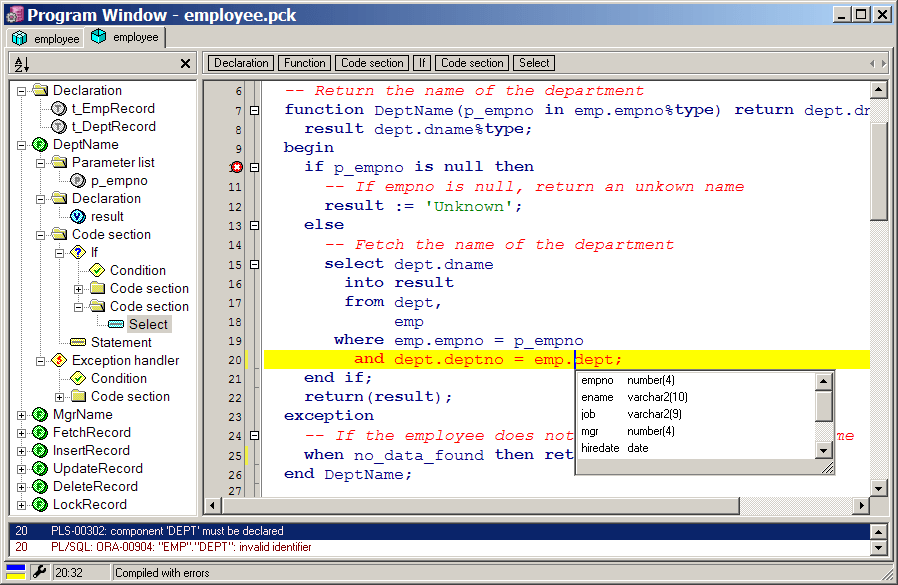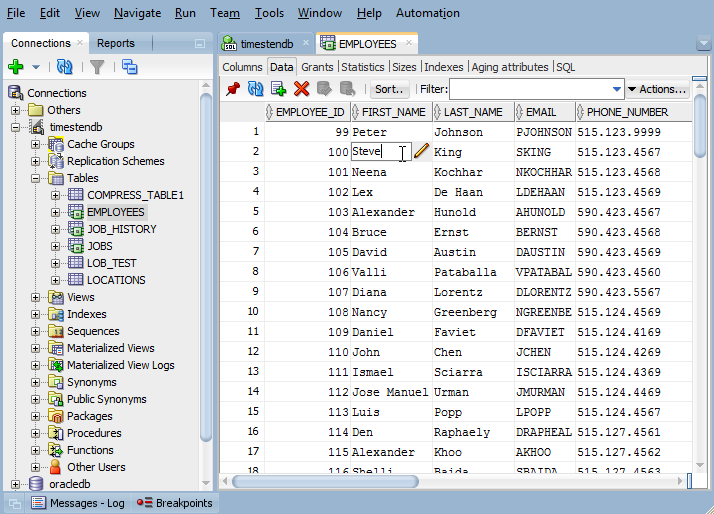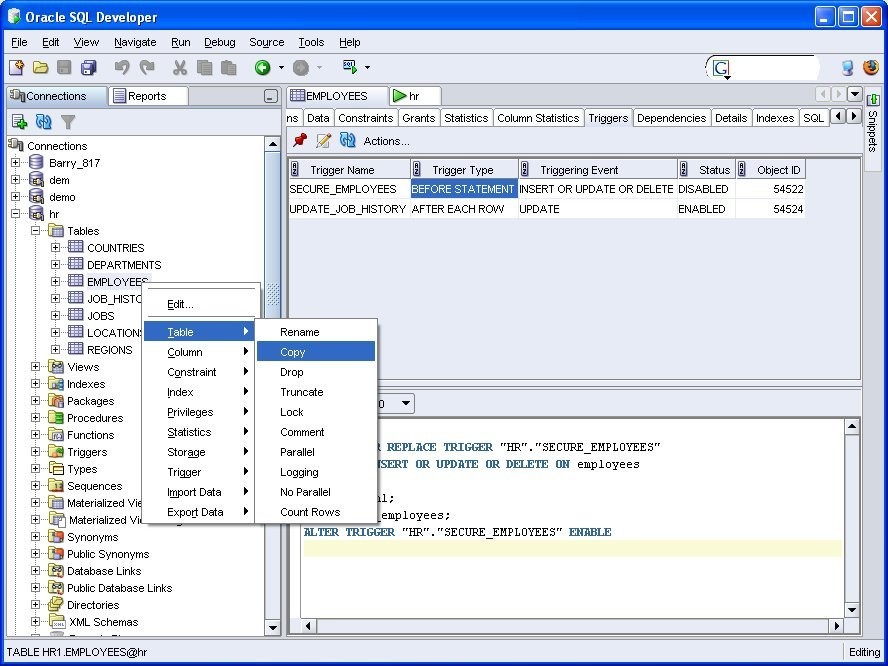

There is also a search option with this window. The highlighted SQL statements got added to the SQL worksheet in one shot. You can highlight multiple SQL statements and copy all of them to the worksheet at once. Click the to append the selected statements to the existing SQL worksheet. The SQL history opens up at the bottom and now, choose the required SQL statements. To open up the history, hit the F8 key or right-click and choose SQL history on any SQL worksheet. It is also helpful when you keep enhancing a SQL statement and later refer back to its previous versions. With this, you can pull most of the recently executed SQL with a single click. This saves the history of executed SQL statements in the current SQL Developer session. Go to Tools -> Preferences -> Environment -> Local history to enable history or modify settings, and by default, this option will be enabled. The SQL history option would be your savior if you forgot to store your recently executed SQL statements or PL SQL process. A good practice would be to limit the number of unshared worksheets to two or three, as it would be hard to keep track of what operations are performed in each of the sheets. If the sessions disconnect for any reason, the tool automatically reconnects when a SQL is executed in this sheet. Multiple unshared SQL worksheets can be opened up from each database connection. This provides the flexibility of handling data in two or more ways simultaneously for any specific testing.
ORACLE SQLEDITOR UPDATE
The update statement executed in sheet LOCAL – OE (Unshared) does not reflect in the data used in other worksheets without running a commit.Īlso, any number of repeated rollbacks can be performed without impacting data on other sessions. These unshared SQL worksheets work as independent sessions, and so a DML operation performed on one worksheet does not reflect on the other until it is committed.

The unshared SQL worksheets contain a * icon in the sheet name. This will save a considerable amount of development time as multiple tasks can be done in parallel, like fetching data from two different views, validating more than one process, etc. Each of these sheets acts as a separate database connection. Unshared SQL worksheet helps to execute different queries or processes in parallel. Click the Unshared SQL Worksheet icon or use the shortcut is CTRL + SHIFT + N. One unique feature available in SQL Developer is to open up SQL worksheets in unshared mode. A process run in one worksheet has to be completed for the next one to kick off. When running SQL statements in multiple sheets, the SQL statements run based on the execution order. By default, the sheets open in shared mode. SQL worksheets are commonly used to run queries and to execute any PL SQL process. Unshared SQL worksheet and SQL History – A multi-tasker with a good memory You can enter the table name, column name, data type, and all other parameters here.Īfter keying in the values, the DDL tab provides the corresponding SQL statement to prepare any deployment scripts. The below figure shows the whole range of operations available for table oe.customers.īy clicking the down arrow next to Tables, New Table can be created by just filling in the values without writing the DDL statement. By right-clicking on the object, it can be viewed, edited, recompiled, or executed. To do this, type the search string in the contains area.įrom here, based on the object type, all its related operations can be performed at ease. One other option is to search the objects by name in the selected type. The schema browser shows Tables, Views, Indexes, Packages, Procedures, Functions, Operators, Triggers, Types, Sequences, Materialized Views, Synonyms, and few other object types for the selected schema. It also helps to browse through other schemas based on the permissions granted in the database. To open, right-click on the connection name and select Schema Browser. Schema Browser helps to review the existing objects in the schema.

Any person who connects to a schema would like to check its contents and browse through it. The database connections can be easily set up using a TNS name file or keying in all the connection details. Compared to other tools for Oracle database, this comes in handy for database development and support tasks. Some of the key features are discussed here to help navigate the tool and better understand it. It has a wide variety of options and utilities to help in day to day development or support activities.
ORACLE SQLEDITOR FREE
SQL Developer is a free tool provided by Oracle. SQL Developer – A great tool and better ways to use it - Simple Talk Skip to content


 0 kommentar(er)
0 kommentar(er)
